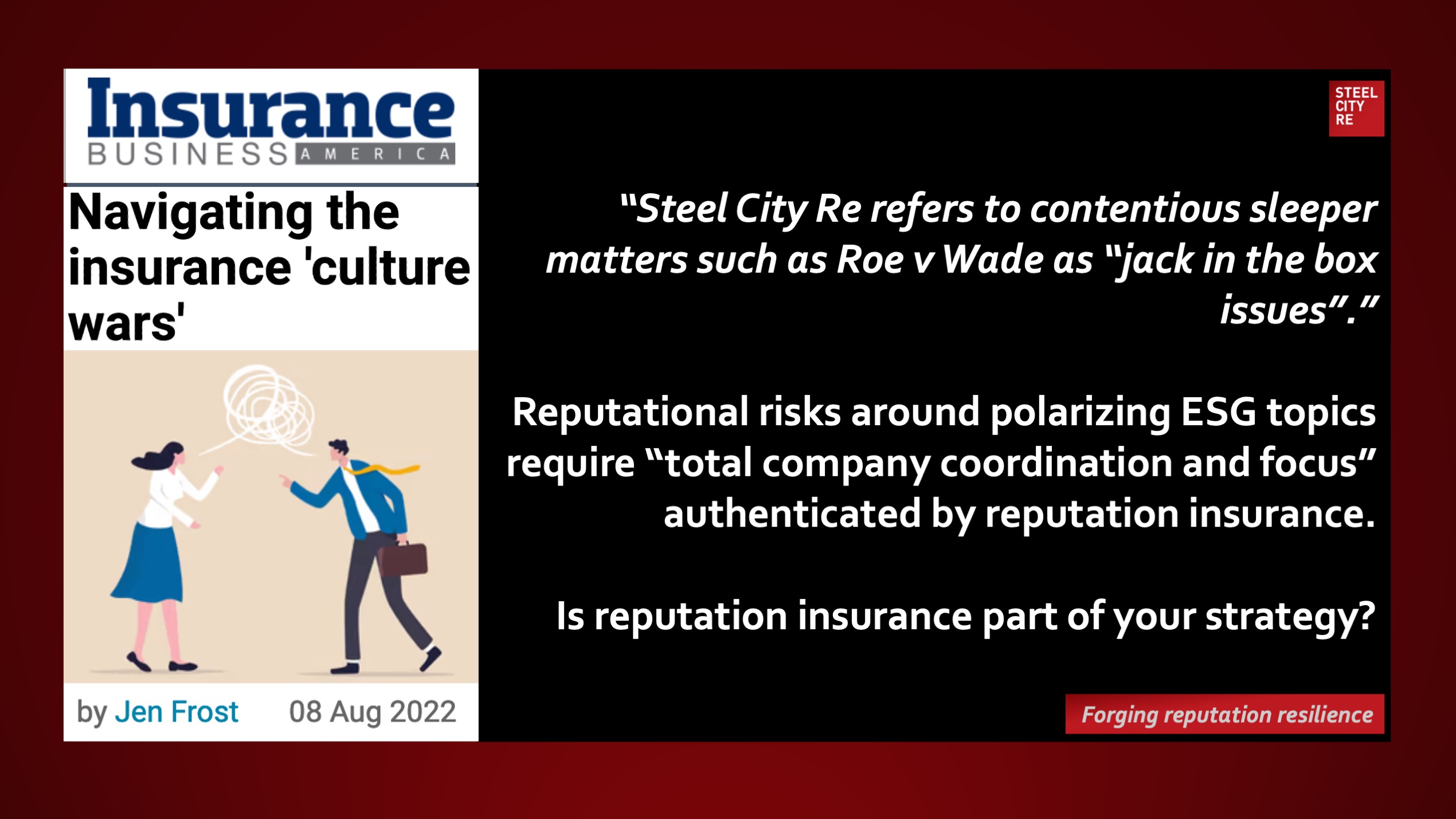Reputation risk culture wars. “Big businesses across the country are having to navigate the choppy waters of delivering on DE&I and ESG pledges and being seen to act in tune with their stated values, all while keeping numerous stakeholders happy and – the big one – keeping the money flowing in. […] Company stakeholders are not limited to the board, investors, staff, and customers. They can also include non-governmental organizations and activists, litigators, vendors, creditors, and regulators. Each may take a very different view to one another..”
Insurance Business America
August 13, 2022
“Steel City Re refers to contentious sleeper matters such as Roe v Wade as “jack in the box issues”.”
Click on Read More (below) for more contents (No Paywall).
Kossovsky said: “The real question is, how do we find out what our stakeholders expect, and how do we minimise leaving them angry or disappointed with our decision such that the economic consequences of our decision and their reaction is the least damaging to the firm, and therefore less likely to trigger second guessing by our investors?”.
Reputation risk culture wars. Reputation value is a strategic power companies use to sell more, faster, and at premium prices; and to obtain labor, vendor services, as well as capital on preferred terms.
Steel City Re mitigates the hazards of ESG (reputation) risk that threaten reputation value. We use parametric reputation insurances, ESG insurances, and risk management advisory services to make our clients reputationally resilient.
Risk management, risk financing in insurance captives, and risk transfer through reputation insurances comprise the constituent elements of a comprehensive Steel City Re reputation risk governance and management solution.
Click on the highlighted text for a broader view of reputation risk case studies and reputation premium; or to explore additional articles by Steel City Re here, mentions of Steel City Re here, and comments on newsworthy topics by Steel City Re here.
Learn about our services here.
Context and Background
Risk managers are now central to the process for managing risks to reputation and that’s a process marketers and communications professionals need to be a part of. The oversight of reputation risk management is mission-critical.
Courts have increasingly been ruling that reputation is a mission critical function and oversight of its management is a responsibility of the board of directors. Courts are also ruling that marketing statements companies make – if they related to issues that affect their reputation, like ESG – may be considered material by investors. Litigation along these lines has yielded large settlements or verdicts for plaintiffs.
Reputation risk culture wars. And now, the SEC has proposed new rules requiring disclosures by public companies related to their ESG activities; those statements could become a communications and reputational minefield.
As a result, reputation risk management is evolving into an intelligence gathering operation spanning the entire enterprise, roping in the enterprise risk manager, compliance counsel, and increasingly, reporting up to the Chief Legal Officer. There is a growing recognition that reputation is not a product merely of marketing and media coverage, but of the degree to which stakeholders’ expectations are aligned with actual performance. The reputation risk management process requires a thorough and ongoing analysis of stakeholder expectations, the risks of disappointment, and a plan for either managing those expectations or assessing and insuring against the cost of failure.
One Last Question
Are ESG insurance and reputation insurance part of your strategy?

